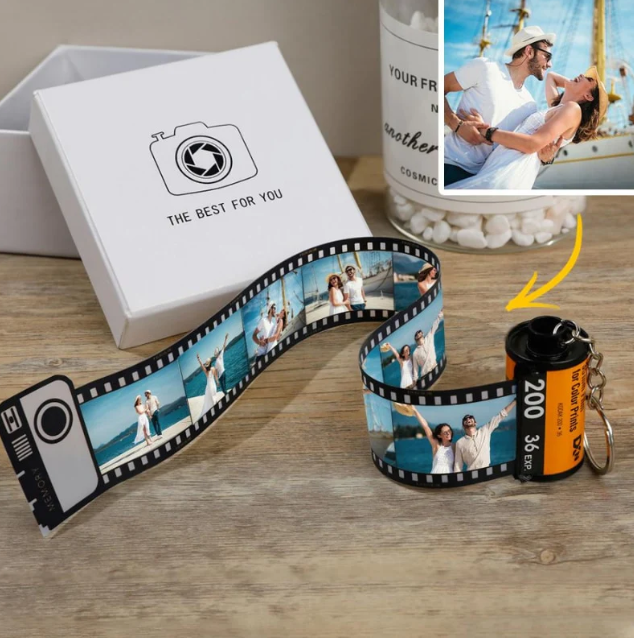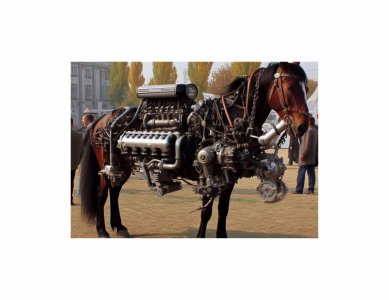wrs1145
A native Texan looking for the light.
i was looking on YouTube this morning and saw several videos on how to digitize a film camera and my thought immediately came to RFF. What have your experiences been? Is it too early to gauge the effort or not?
Thanks,
Bill
what experiences have you had or iis it
Thanks,
Bill
what experiences have you had or iis it
raydm6
Yay! Cameras! 🙈🙉🙊┌( ಠ_ಠ)┘ [◉"]
Are you referring to digital camera backs for analog cameras? Some comments here:
 rangefinderforum.com
rangefinderforum.com
Kickstarter Digital Back for 35mm Film Cameras
If only it were as simple and intuitive to use as a...you name it. The Nikon Df could be like that, but they were too afraid to dive into the niche. It is. Just set the Sony A7 to manual, assign the correct buttons to ISO and focus peaking, set it to show the exposure meter in the screen and...
 rangefinderforum.com
rangefinderforum.com
peterm1
Mentor
I don't know. The more I look at and read about these efforts to create a digital back for film cameras the more clunky they seem and the more I am drawn to the conclusion that it's all rather like trying to design a new internal combustion engine that is capable of being retrofitted into a horse.
I loved my film cameras back in the day. But that was then.
I loved my film cameras back in the day. But that was then.
Godfrey
somewhat colored
The most successful digital conversion I've seen and used is the use of a Hasselblad CFVII 50c digital back on my 1978 Hasselblad 500CM body. Aside from the reduction in format size (56x56mm to 44x33mm or 33x33mm), it's like having an infinite roll of film in the Hasselblad. Of course, this is a pretty expensive solution, requiring the purchase of a Hasselblad 907x/CFVII 50c body/back for about $7000 on top of whatever Hasselblad film equipment you already have or want.
(I compensate for the reduction in format size by using my 50mm lens instead of the 80mm lens for a "normal", but honestly I use the 120mm lens on the Hassy 500CM more than the 80mm anyway, so the 80mm with the digital back set to 33x33 capture works just fine.)
Beyond that, these digital conversions all seem to have a mess of gotchas and require a bunch of unintuitive workarounds to be useable, which to me gets in the way of making photographs. A well designed, high quality digital camera works so much more smoothly and efficiently it just isn't worth the time and effort, to me.
G
(I compensate for the reduction in format size by using my 50mm lens instead of the 80mm lens for a "normal", but honestly I use the 120mm lens on the Hassy 500CM more than the 80mm anyway, so the 80mm with the digital back set to 33x33 capture works just fine.)
Beyond that, these digital conversions all seem to have a mess of gotchas and require a bunch of unintuitive workarounds to be useable, which to me gets in the way of making photographs. A well designed, high quality digital camera works so much more smoothly and efficiently it just isn't worth the time and effort, to me.
G
wayben
Established
I am drawn to the conclusion that it's all rather like trying to design a new internal combustion engine that is capable of being retrofitted into a horse.
Exactly!! What is to be gained from it other than proving the ability to do it?
seany65
Well-known
Wasn't therer a company a few years ago that made digital backs for medium format film cameras?
Retro-Grouch
Well-known
I'm happy to use my film cameras in the manner for which they were designed, i.e., for film. If one wants to embrace digital imaging, then it makes sense to use the incredibly powerful and sophisticated (and relatively inexpensive) tools that are designed for that. I do appreciate that there seem to be no digital cameras that have that ineffable "feel" of a film camera from the 1970's, but to be honest, most later film cameras lost that feel as well, turning into plastic blobs in the period before digital arrived. I should correct myself: digital Leicas have that "feel", as does, I imagine, the Hassy back that Godfrey mentions. However, for mere mortals, those are out of the running for financial reasons.
Let's face it: we've for some time lived in a world where nearly everything has become cheapened and disposable. That's why I'll do whatever is necessary to keep the Leica, the Rolleiflex, and the Hassy going, and running on film.
Let's face it: we've for some time lived in a world where nearly everything has become cheapened and disposable. That's why I'll do whatever is necessary to keep the Leica, the Rolleiflex, and the Hassy going, and running on film.
wayben
Established
The Nikon Df was a merger of digital to film camera feel, but ended up as a rather bloated mess to me.
Nokton48
Mentor
I'm delighted with my new toy.
 ELM CFV16 Digital Back 50mm Dist Ready To Roll by Nokton48, on Flickr
ELM CFV16 Digital Back 50mm Dist Ready To Roll by Nokton48, on Flickr
 ELM CFV16 Digital Back 50mm Dist Ready To Roll by Nokton48, on Flickr
ELM CFV16 Digital Back 50mm Dist Ready To Roll by Nokton48, on FlickrAAlfano
Well-known
Well said. I'll keep shooting film in my film cameras, thank you very much. Elegant instruments for a more civilized age.I'm happy to use my film cameras in the manner for which they were designed, i.e., for film. If one wants to embrace digital imaging, then it makes sense to use the incredibly powerful and sophisticated (and relatively inexpensive) tools that are designed for that. I do appreciate that there seem to be no digital cameras that have that ineffable "feel" of a film camera from the 1970's, but to be honest, most later film cameras lost that feel as well, turning into plastic blobs in the period before digital arrived. I should correct myself: digital Leicas have that "feel", as does, I imagine, the Hassy back that Godfrey mentions. However, for mere mortals, those are out of the running for financial reasons.
Let's face it: we've for some time lived in a world where nearly everything has become cheapened and disposable. That's why I'll do whatever is necessary to keep the Leica, the Rolleiflex, and the Hassy going, and running on film.
raydm6
Yay! Cameras! 🙈🙉🙊┌( ಠ_ಠ)┘ [◉"]
Then there’s always this 
36mm! That’s 1mm more!!

36mm! That’s 1mm more!!

Custom FilmRoll Keychain
Our 36mm FilmRoll Keychain holds up to 20 Photos and is the PERFECT way to cherish your favorite memories with someone special and make them happy! HOW TO CUSTOMIZE? Choose whether you want 10,15 or 20 Photos Added Click the "upload photos" button and navigate to the photos you wish to upload...
www.photofilmroll.com
Retro-Grouch
Well-known
I don't know. The more I look at and read about these efforts to create a digital back for film cameras the more clunky they seem and the more I am drawn to the conclusion that it's all rather like trying to design a new internal combustion engine that is capable of being retrofitted into a horse.
I loved my film cameras back in the day. But that was then.

Darthfeeble
But you can call me Steve
I wish that Epson had put more time into the R-D1 cameras, they have "the feel" if you ask me. Maybe it's the manually cocked shutter, that little pause gives a second or two of reflecting on the next shot. Had the Df and Fc had that I think I would like them better.
Retro-Grouch
Well-known
It's alive! The creature is ALIVE!!!!I'm delighted with my new toy.
ELM CFV16 Digital Back 50mm Dist Ready To Roll by Nokton48, on Flickr
Nokton48
Mentor
 500mm Oberkochen 500ELM CFV16 EI 200 EV 14.5 by Nokton48, on Flickr
500mm Oberkochen 500ELM CFV16 EI 200 EV 14.5 by Nokton48, on FlickrThis is the first test of the 500mm F8 Oberkochen Opton Hasselblad lens. EL/M Body with Olde Hasselblad CDS Meter Prism indicated EV14.5. Set that on the lens, this is the result. Hasselblad CFV16 Digital Back set to Ei 200, camera/lens mounted on a Plaubel Peco 2 Way Head, attached to sturdy Manfrotto legs. The pretty new Magnolia tree is our yard was blowing visibly, the 500mm shutter seems to have frozen it, there was a lot of leaf movment in the breeze. It is fun to play with the new digital back and I am loving the saturated colors I'm getting. Hasselblad says it's the fat pixels, but also how much space is around each pixel. Anyways I'm loving the color right out of the camera. Shooting distance was 28 feet, the absolute minimum focus distance on the lens. So I will add extension tubes if needed.
 OPTON Oberkochen f=500mm 1:8 by Nokton48, on Flickr
OPTON Oberkochen f=500mm 1:8 by Nokton48, on Flickrpvdhaar
Peter
I think one of the very few workable conversions was the Leica DMR for the Leica R8/R9 reflexes.
peterm1
Mentor
joe bosak
Well-known
The Mamiya AFDII (and maybe the plain AFD and AFDIII) take both digital and film backs. And with Mamiya to Pentacon 6 adapters - maybe 645 (let alone 48mmx36mm in the ZD back I have) isn't 6x6, but it means I can use my old Kiev glass reasonably close to the designed format in either medium for cheap. That said, as it turned out I use Mamiya glass mostly anyway.
Last edited:
Share:
-
This site uses cookies to help personalise content, tailor your experience and to keep you logged in if you register.
By continuing to use this site, you are consenting to our use of cookies.

